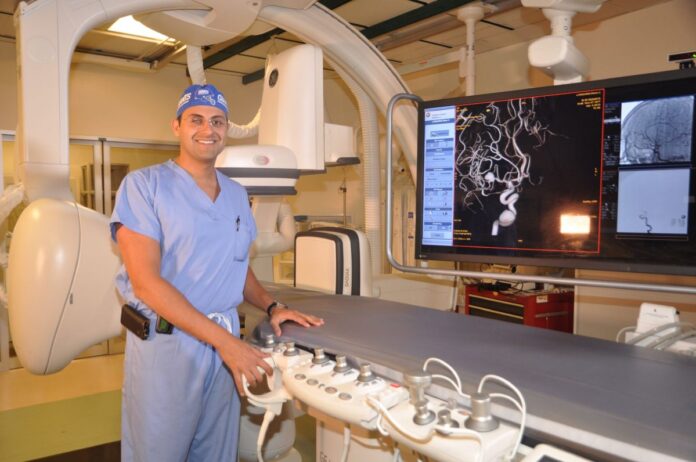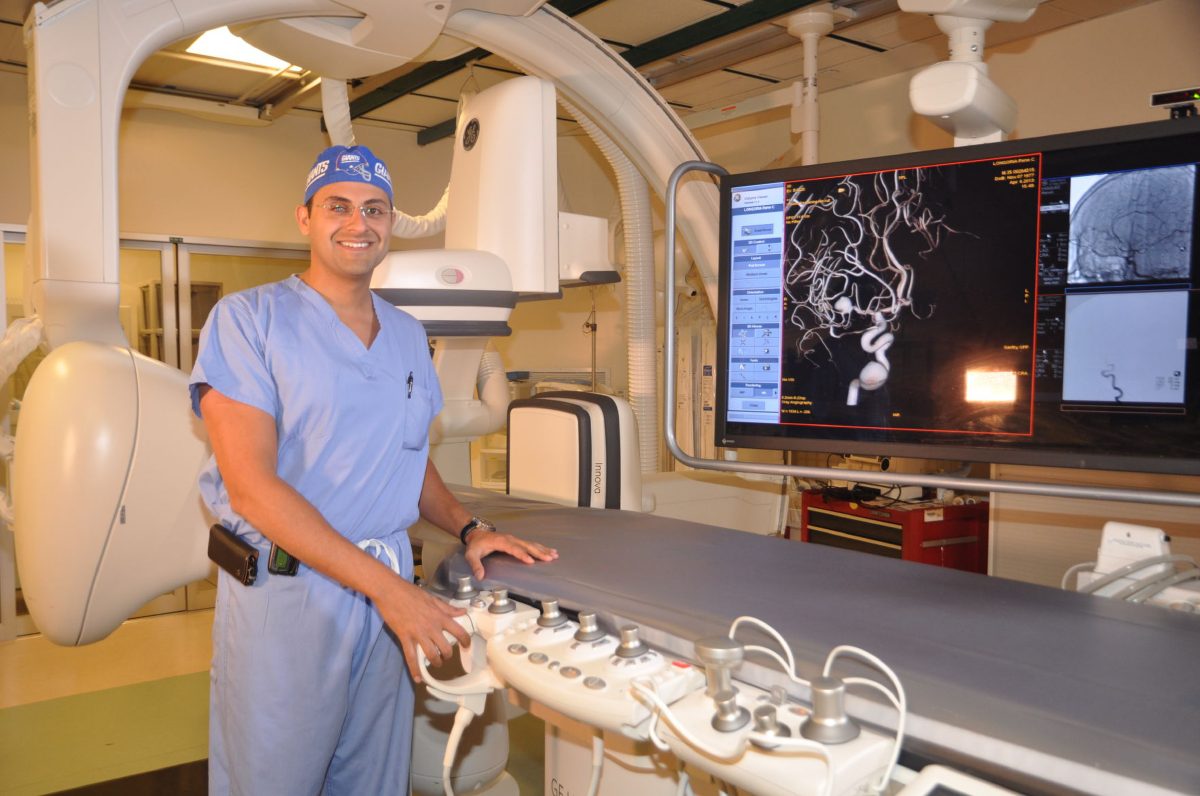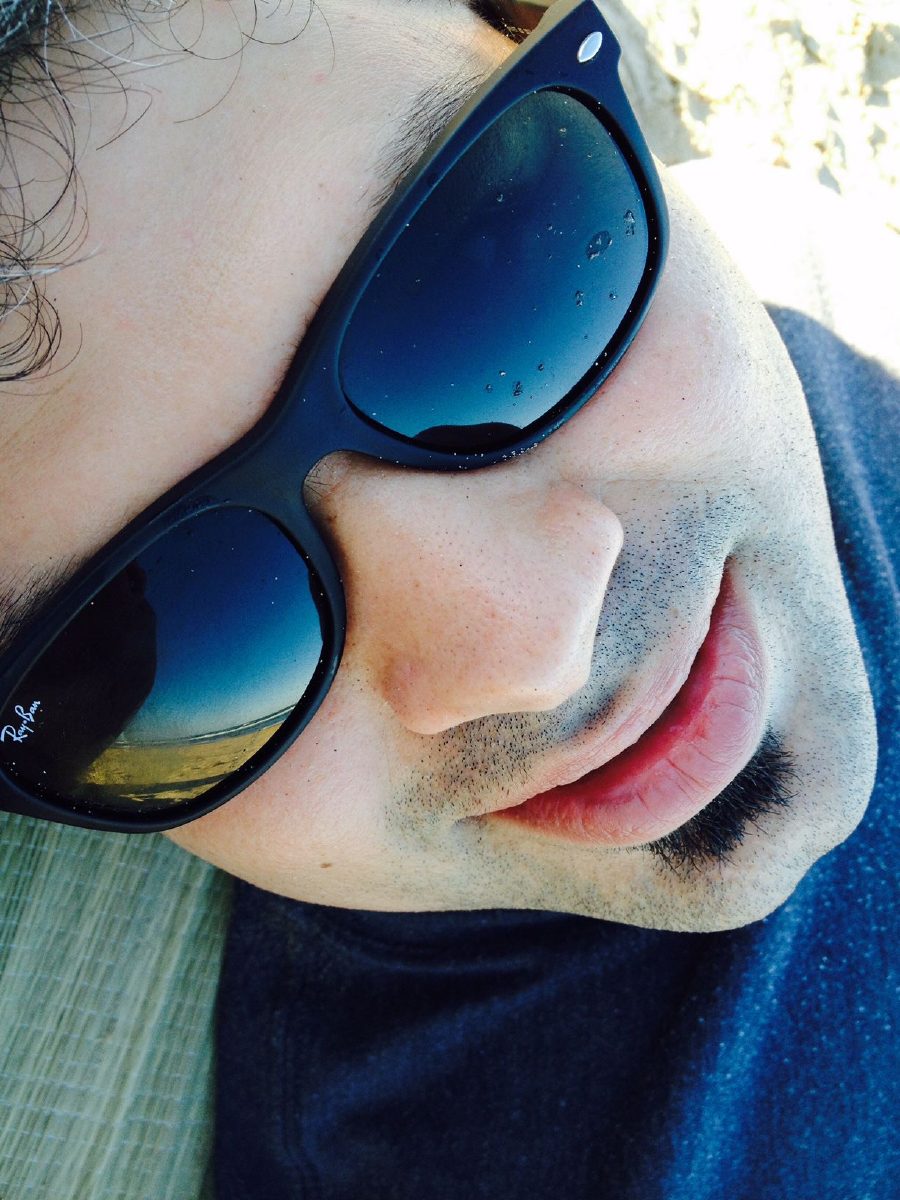HARLINGEN – The recent holidays could have been much different for Mission’s Rene and Veronica Longoria.
It was just a few years ago when Veronica and some doctors weren’t sure whether Rene would survive a brain aneurysm that left him in an induced coma and in the hospital for weeks. Or, if he did survive, there were questions whether he would be able to function normally ever again.
“When he was in a coma, we had a few doctors come by and see him,” Veronica said of Rene. “One in particular walked in and wanted to speak to me and his mom and he said, ‘you guys need to come to terms with what is coming.’”
Veronica said there were others about the same age as Rene in the hospital who also had aneurysms and they weren’t going to make it.
“I was told that it is over, you need to accept it, too,” Veronica said about what the doctors told her. “I said no, there is no way. It was a very difficult time, but my family would tell me to not lose hope. The last thing you can do is lose hope.”
She and Rene didn’t. And, it turned out some of those doctors were wrong.
Now, that is all behind the couple as they continue to enjoy life in the Rio Grande Valley.
“My outlook on life has changed,” Rene said. “I value and treasure every extra second I am here with my wife and family.”
Rene still suffers some effects from the aneurysms that almost killed him. He has weakness on his left side and has to make a conscious effort to lift up his left foot. However, he expects to make a full recovery.
Rene and Veronica said it is interesting when the pair go back for his annual checks. When they see a doctor or therapist who was there when Rene was in the hospital, the reaction is a reminder of how close Rene was to suffering the same fate as so many other people who have had ruptured aneurysms.
“It brings things into perspective when someone says, ‘Oh my God, you weren’t supposed to make it.’” Veronica said. “It feels so scary to hear it that way, but it also feels so good that he made it.”
But it took some help from people he didn’t know, some confident and talented doctors and a device that is being called revolutionary to help save Rene’s life.
March 24, 2013
It was just a typical Sunday morning and Rene was headed out for a bike ride on a trail in Mission near his apartment.
The last thing he remembers is being dizzy and feeling a pop in the side of his head where the rupture occurred.
Down he went.
Luckily, some other people were on the trail and found him unconscious. They called 9-1-1 and even waited there with him as the ambulance drove to the remote area.
Veronica had gone back to sleep just after Rene had left.
Just a little later, she was summoned to the emergency room not knowing of the aneurysm, just thinking Rene fell while riding his bike.
When she arrived, she wasn’t sure what she saw.
“He was just squirming and mumbling and only one side, his right side, was moving,” Veronica said.
After some tests, it was revealed Rene had a brain bleed which was caused by a burst aneurysm.
It wasn’t long before doctors performed an emergency craniotomy, but not to treat the aneurysm itself. After that procedure, Rene was put into a medically induced coma to prevent further damage to the brain.
Six days later, he was taken off the ventilator and was able to breathe on his own. However, the surgeon discovered his aneurysm re-bled and would have to be moved to another hospital to perform another procedure.
That’s when he was taken to Valley Baptist and endovascular neurologist Dr. Ameer Hassan took over and repaired the original aneurysm.
Once he made it through that, Veronica thought things were going to get better. But that didn’t happen. Rene ended up spending more than 30 days at various hospitals.
Rene only remembers “mass confusion,” where he would open his eyes in one room and then wake up in different room with a different family member there. He said it felt like a blink, but it was like 10 or 15 hours later.
They still felt things were going well, but that’s when Hassan discovered a second aneurysm – a giant aneurysm that was on its way to rupturing.
A typical size of an aneurysm is five to seven millimeters. Rene’s results showed his second aneurism was 17 millimeters in size.
“It’s important to catch an aneurysm before it ruptures, as 40 percent of ruptured brain aneurysms are fatal,” Dr. Hassan said.
That’s where Hassan used the state-of-the-art Pipeline device to remove Rene’s giant aneurysm.
“I felt although this was new technology, I did have a lot of faith in what he (Dr. Hassan) was able to do,” he said. “I knew that if I left the aneurysm untreated, I might not be as lucky as I had been in the past.”
A month in the hospital and going through intensive physical therapy, including six months of outpatient therapy, Rene returned to work, but found it too difficult to pursue teaching.
Although that was devastating, he now is volunteering twice a week at a local history museum.
“It’s been a long recovery, but I thank Dr. Hassan,” Rene said. “I have to be aware, but I don’t spend my time worried about getting another one. I would go insane.”
Aneurysm at 11
It was around 1988 when Rene first had a problem that he had forgotten about until his most recent ruptured aneurysm.
He was just about to turn 11 years old and he and his family were at the carnival. He was on the Spider ride when he was stricken with a terrible headache. Soon after, he began vomiting blood.
But, he didn’t immediately tell his parents.
“I knew if I told them, we would go home,” Rene said. “There was one more ride I wanted to ride on.”
When the Himalayan ride started, Rene’s headache became more painful and intense.
“I almost told the guy to stop the ride,” he said. “I didn’t muster up the courage to do that so I took the pain.”
After the ride, he told his parents. He vomited all the way home – at every traffic light.
“The pain was unbearable,” Rene remembered. “I thought please do something, it felt like being hit with a sledgehammer.”
Once at home, he was given an aspirin and soon after passed out, foaming at the mouth and convulsing.
“I don’t think anyone in my family had ever even heard of an aneurysm,” he said. “I imagine there was shock involved.”
An aneurysm at his age was also a surprise and, in 1988, there was much less information about the study of the brain.
“I remember stories my mom telling me that the doctors themselves were dumbfounded and had to refer back to their medical books,” Rene said.
It didn’t take long for the aneurysm to cure itself.
“When we went in for the scan, they saw the bleeding had stopped,” Rene said.
He was given some medication and was never warned of having another aneurysm form.
“I thought it was a one-time thing,” he said. “I lived my life as a regular teenager, graduated, went to college, graduated, got married, and had a job as a teacher – all without even giving a second thought to the possibility of this happening again.”
It can happen to anyone
Rene was quick to point out, an aneurysm doesn’t just happen to people who may be out of shape or have high blood pressure. Some of those at the hospital while he was there included a Zumba instructor from a healthy family and a teacher.
“It can happen to anybody,” he said. “Not just the person that has bad cholesterol numbers. It can be someone who is healthy. You never know what’s inside your brain.”
State-of-the-art equipment and talent
By LISA SEISER
Editor
HARLINGEN – It’s called a Pipeline Embolization device.
That probably doesn’t mean much even if you understand what it means.
But for Rene and Veronica Longoria and their doctor, endovascular neurologist Ameer Hassan, it means the difference between life and death.
You see, this “revolutionary tool” used by some neurosurgeons on giant aneurysms is a thin-braided mesh device placed across an aneurysm opening, which stops the flow to the aneurysm. It is basically a flow-diverting stint that limits the excess blood flow and causes the aneurysm to clot and dissolve back into the body.
But you can’t have this procedure done anywhere. Hassan at Valley Baptist Medical has been one of the only doctors to use the Pipeline in South Texas.
“When we first did one here in 2012, it was the first one done south of Houston,” Hassan said about Valley Baptist during recent phone interview. “It hadn’t even been done in San Antonio.”
Now, since August 2012, the Pipeline procedure is done here in Harlingen about 30 times a year. Hassan is one of two doctors in the Valley who performs the procedure.
Hassan said years ago, large aneurysms were not even treated.
“This is really a game-changer,” he said. “Annual incidents haven’t changed much. But there’s been a decrease in mortality rate from aneurysms.”
The large aneurysms now treated with the Pipeline device used to be ones that weren’t treated at all. Smaller aneurysms are treated by coiling or surgery.
During a coiling, a catheter is passed through the groin up into the artery containing the aneurysm. Platinum coils are then released. The coils induce clotting of the aneurysm and prevent blood from getting into it.
But Hassan was quick to point out while the coil has been used longer and for the smaller aneurysms, the Pipeline is a relatively safe treatment.
“The device itself is a flow diverter,” he said. “The key is to do it without even going into the aneurysm. That way we treat it relatively safely.”






